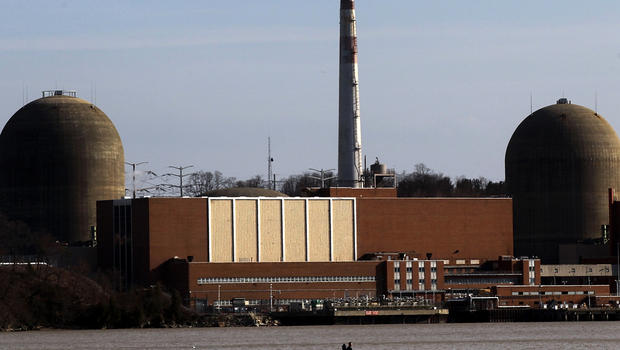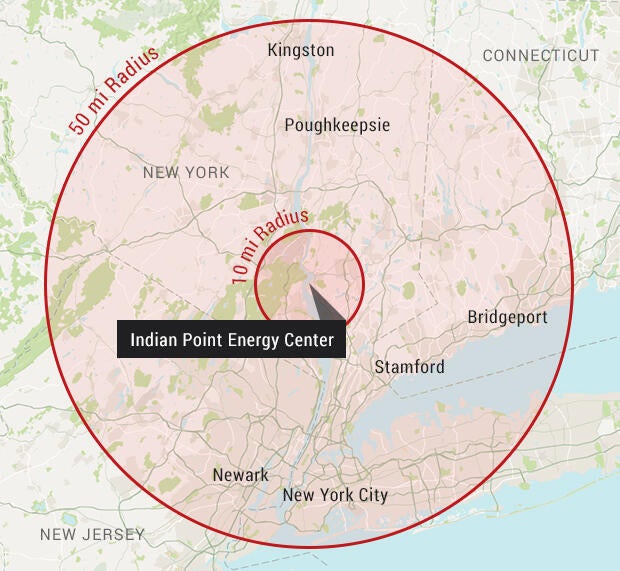Radiation Sensors in Major U.S. Cities Turned Off Because They Don’t Work
Radiation Sensors in Major U.S. Cities Turned Off Because They Don’t Work
Most stations run by EPA can’t monitor for beta particles in real time, prompting criticism; agency says monitoring for gamma rays is enough
By
JOHN R. EMSHWILLER and
GARY FIELDS
Oct. 19, 2015 1:37 p.m. ET
115 COMMENTS
A national radiation-monitoring system enhanced after the Sept. 11, 2001, terrorist attacks isn’t working as intended, with nearly three-quarters of stations not checking for a type of radiation in real time, including ones in New York, Chicago and Los Angeles.
Environmental Protection Agency officials confirmed 99 of 135 beta-radiation sensors in its RadNet system—which monitors in all 50 states, the District of Columbia and Puerto Rico—aren’t working and have been turned off. Officials blame electromagnetic interference from sources such as cellphone towers and said efforts to resolve the problem have been unsuccessful.
EPA officials said the beta-detection problem cropped up in 2006 when they started putting the real-time monitors into the field.
The agency can compensate for the lack of real-time beta data, officials said, by relying on each RadNet station’s gamma-radiation monitor, which hasn’t been affected by the interference. Almost all radionuclides that emit beta particles also emit gamma radiation, they said. Both types of radiation can cause cancer.
Some nuclear experts said that in an emergency, knowing as much as possible about whether beta or gamma emitters are present, and in which amounts, can be crucial for making decisions such as how large an area might need protective measures. In instances where only a beta emitter is present, the lack of a working monitor could leave officials unaware of potentially dangerous levels of contamination, they added.
The beta-monitoring issue could fuel critics who contend the EPA has been pulling back on its radiation-protection mission—an assertion the agency strongly disputes.
Gamma- and beta-emitting radionuclides can be carried by the wind long distances from a nuclear event, such as an explosion or power-plant accident. Gamma rays from those radionuclides can then travel hundreds of feet or more and penetrate objects, including human tissue, according to federal government websites. Beta particles generally travel only several feet from their emission source. While they can penetrate skin, their main health threat comes if inhaled or ingested in tainted food or water.
The EPA upgraded the RadNet system after 9/11 to monitor and transmit data on both types of radiation. While the attacks didn’t involve radioactive material, “one of the weaknesses identified in the post-9/11 reassessment of the RadNet air network was that decision makers were not receiving data quickly enough,” the EPA said in 2012.
Officials said they don’t know why some beta monitors still work, including locations in Phoenix, Dallas, Pittsburgh and Washington, D.C.
Real-time information on various types of radiation “is very important to the emergency-response community” because it could help determine the need for ordering evacuations or telling people to stay indoors, said Jim Hardeman, retired manager of the environmental radiation program at the Georgia Department of Natural Resources.
Federal officials said they can still obtain beta data by retrieving the filter from each monitoring station. These filters, which collect particles from air flowing through the machines, are sent to an EPA lab for analysis. The EPA said filters are typically changed once or twice a week.
Even with the beta-detection problem, the RadNet system, along with other government radiological resources, has enough capability to do the job, EPA officials said. “We can confidently say that this system is fully capable now and fully operational now with the current monitors it has to detect fairly minute levels of radiation,” said Jonathan Edwards, director of the EPA’s radiation protection division.
EPA officials acknowledged that one major radionuclide—strontium-90, which can get into people’s bones—emits only beta particles. However, they said, an event releasing a large amount of strontium-90 would also release large amounts of gamma-emitting radionuclides that could be picked up. Even with beta monitors, laboratory filter analyses would be needed to confirm the strontium, they added.
But some experts, inside and outside of government, argue that being able to separately and quickly detect the presence of a beta emitter such as strontium-90 could influence evacuation or other emergency plans. The 2012 EPA report also said gamma monitoring wasn’t sufficient to deal with the threat from strontium-90, which could “cause large-scale public health impacts.”
“If real-time beta measurements were unnecessary, why did the government spend money installing the capability in the first place?” asked Daniel Hirsch, a lecturer on nuclear policy at the University of California, Santa Cruz, and a longtime critic of federal radiation-protection efforts who has studied the RadNet system. The EPA’s explanation “seems like an after-the-fact rationalization when they discovered the monitors didn’t work.”
EPA officials said the beta detectors are considered much less important than the gamma monitors. “Not having the beta monitor is absolutely not a concern of ours,” said John Griggs, director of the EPA’s National Analytical Radiation Environmental Laboratory.
Each RadNet monitoring station is a roughly 5-foot-tall metal box with an attached pole to hold additional equipment. There is at least one at a fixed location in every state. The devices on average cost about $52,000 each, according to the EPA. The annual cost of up to $2 million to operate the fixed monitoring system is a fraction of the EPA’s 2015 budget of $8.1 billion.
A separate 2012 report by the EPA’s inspector general criticized the condition of the RadNet system at the time of the March 2011 accident at the Fukushima nuclear complex in Japan. Radiation from Japan reached the U.S., though not at high-enough levels to pose a public-health threat, federal officials said.
Even though the RadNet system was designated as “critical infrastructure” for protecting the public, 25 RadNet monitors had been out of service for an average of 130 days at the time of the Fukushima accident and weren’t providing any usable real-time data, beta or gamma, the inspector general’s report said.
“Because EPA did not manage RadNet as a high-priority program, parts shortages and insufficient contract oversight contributed to the extensive delay in fixing broken monitors,” the report concluded. Repairs were completed by early April 2011, as monitoring of the Fukushima accident continued.
Responding to the report when it was released, the EPA said the RadNet system had nonetheless been able to adequately monitor Fukushima radiation. A follow-up inspector general’s report last year found the EPA had taken recommended corrective actions.
The inspector general’s reports didn’t mention the beta-monitoring problem, though it existed at the time of the Fukushima accident. A spokeswoman for the inspector general’s office said that examining the beta-monitoring system wasn’t part of its RadNet investigation.
Two other EPA actions have raised concerns about the agency’s radiation-monitoring activities.
Earlier this year, the EPA combined its two mobile radiation-analysis labs into one, scrapping a location in Las Vegas and beefing up one in Montgomery, Ala. The mobile lab can be sent to investigate suspected radiation events.
California Gov. Jerry Brown’s Office of Emergency Services warned in a May letter that “leaving the western U.S. without this critical resource will increase response time to our state, jeopardizing our combined ability to adequately protect the public.”
The EPA said the move was a cost-saving measure and that remaining radiological resources in Western states are sufficient to deal with emergencies.
In addition, the EPA last year discontinued a part of its RadNet system that tested milk from dairies for radiation. The agency said the task would be handled by the Food and Drug Administration, which for years has also had a milk-sampling program.
Moving the mobile lab and dropping the milk monitoring are “part of a pattern of retreat” by the EPA on its radiation-protection work, said Jeff Ruch, executive director of Public Employees for Environmental Responsibility, a Washington, D.C.-based advocacy group.
The EPA, in a response, said it remains “dedicated to protecting public health and the environment through the use of sound radiation science.”






I thought a year was a long time.......sounds like a plot for a horror movie.........teenagers/college students go to find the fire burning out of control, underground ..........

 ....
....  ...................what happens in Las Vegas.......stays?????
...................what happens in Las Vegas.......stays?????




 Email Article
Email Article